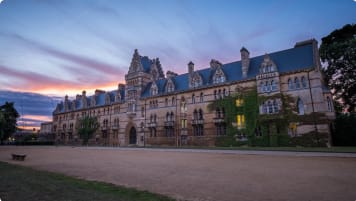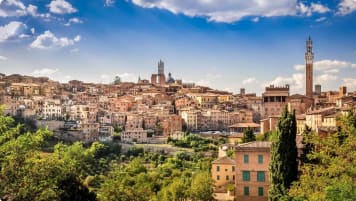The Hunt for Caravaggio's Stolen 'Nativity'
Searching for Caravaggio’s Nativity The hunt for Caravaggio’s stolen painting of the nativity scene may just be the most high-profile art crime of the 20th century. One stormy night in October 1969, an altarpiece painted…
8 Dec 19 · 7 mins read
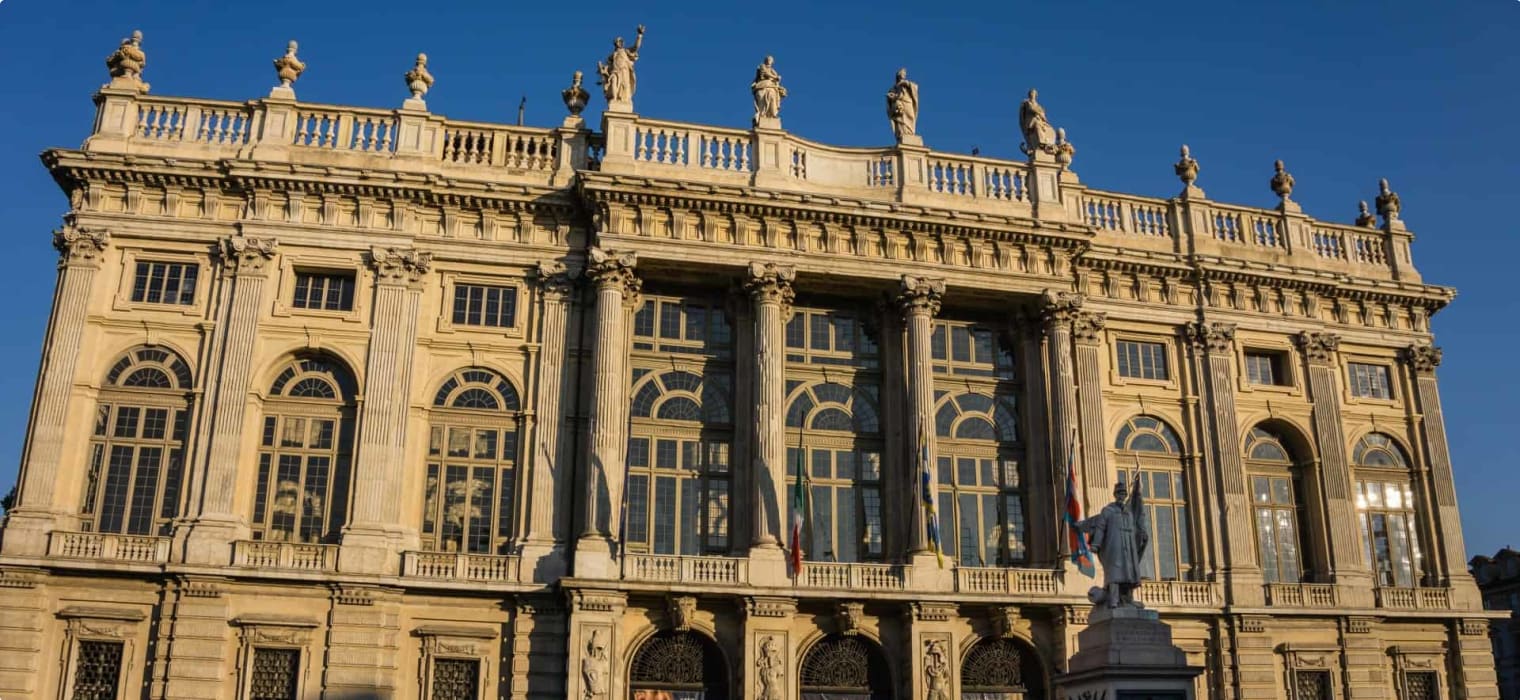
Searching for Caravaggio’s Nativity
The hunt for Caravaggio’s stolen painting of the nativity scene may just be the most high-profile art crime of the 20th century.
One stormy night in October 1969, an altarpiece painted by Italian master Michelangelo Merisi da Caravaggio was stolen from the Oratory of San Lorenzo in Palermo, Sicily. The painting was cut from its place on the altar wall, a task that would have required more than one thief and many believe members of the Cosa Nostra (the Sicilian Mafia) were involved with the theft. Called the Nativity with San Lorenzo and San Francesco, it had hung at the Oratory for 350 years and experts estimate its value at US$20 million. It is on the list of the FBI’s ‘most-wanted stolen works of art’.
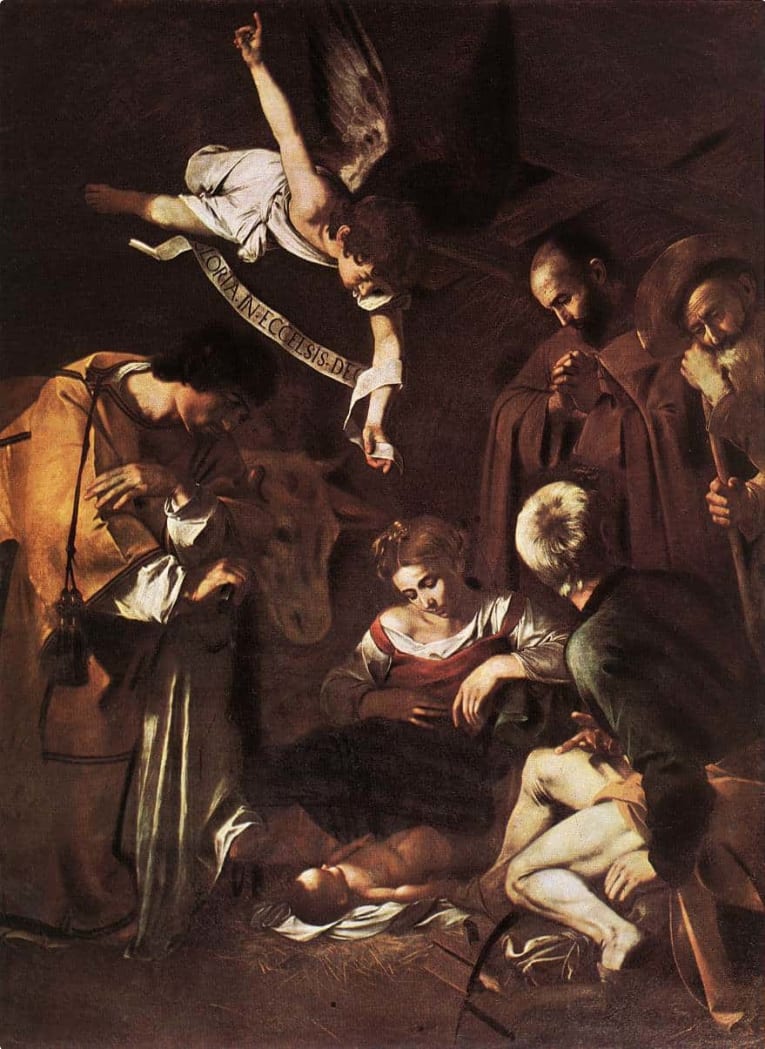
Questioning the Mafia
The network of organised-crime groups called the Cosa Nostra (which translates to ‘our cause’ or ‘our thing’) evolved on the Italian island of Sicily from clans who banded together to protect themselves from invading foreign forces (click here to read about the early history of Sicily) to violent private armies in the 19th century who extorted money from landowners (protection racketeering) and carried out their own brand of justice. The word ‘mafia’ takes its roots from a Sicilian word which means ‘bragging’. The American Mafia, which rose to power during the 1920s Prohibition Era, was a separate entity which adopted some of the traditions of its Italian counterpart.
To quote the New York Times, ‘In the ’60s, no major crime could occur in Palermo without the Mafia knowing about it.’ The Sicilian Mafia rose to greater heights during the post-World War II rebuilding of Sicily, as the construction companies were backed by mobsters. By the 1970s, the mob was a major player in the global drug trade.
When the Caravaggio altarpiece went missing, investigators naturally turned to Cosa Nostra. The Mafia was said to be involved in the illegal trade of stolen art, which was used to pay for drugs and weapons.
Over the years, Mafia turncoats (those who desert the mafia) gave conflicting accounts regarding the painting’s fate: burned in a fire, abandoned in a farm outhouse and eaten by mice or pigs, used as a bedside rug, locked underground in an iron case, sold for diamonds in South Africa etc leaving investigators at a loss about what at happened to it.
Where is Caravaggio’s Nativity now?
In May 2017, Gaetano Grado, another turncoat, told the Italian Anti-mafia Commission that he was asked by mob boss Gaetano Badalamenti (who died in 2004) to look into the Caravaggio theft. Grado said he tracked down the thieves and the painting, which was then taken by Badalamenti to an art dealer in Switzerland. The art dealer reportedly cried upon seeing the masterpiece, and suggested cutting the painting into pieces in order to sell it discreetly. The dealer had also since died.
However, new developments in the investigations, reported in October 2018, disproved Grado’s testimony, with investigators saying that he must have mistaken the Caravaggio with another painting also stolen in Palermo.
Italian investigators are convinced Caravaggio’s Nativity is still in one piece, and have visited ‘an unspecified city’ in Eastern Europe. However, art detective Charles Hill, speaking to The Guardian, says he believes the painting is still in Sicily, being used by the Cosa Nostra as collateral for drug deals.
As of December 2018, the painting’s fate remains a mystery. Only time will tell whether almost half a century of searching will have a happy ending. Until the masterpiece is found, a high-quality copy of Caravaggio’s Nativity, produced by art laboratory Factum Arte in 2015, hangs in its place.
In September 2019, the Guardian reported on a previously unseen 2001 video interview of Monsignor Benedetto Rocco, who died in 2003. In the video, Rocco revealed that the painting was kept in the home of Sicilian mafia boss Gaetano Badalamenti, who attempted to extort the church for its return by slicing off a piece of the canvas and mailing it to Rocco. Rocco approached the police, but he ended up being treated as a suspect and was put under investigation. The police later apologised, but the painting remained missing. Rocco, two years before his death, proclaimed that he was sure the Badalamentis still have the painting. You can read more about it here.
How the painting itself came to be adds another rich layer to the story: the Nativity was painted by Caravaggio while he was on the run for murder.
Caravaggio: Artist, Genius, Murderer
Those who profile the 17th century Italian painter hail his unique genius, but also describe him as ‘arrogant‘ and ‘tempestuous’.
Born Michelangelo Merisi in 1571, he had always been known by the name of his hometown – Caravaggio – in Lombardy, northern Italy. He moved to Rome at the age of 20 to try his luck in Italy’s artistic centre. It was rough going at first for young Caravaggio, but in 1595, he found a patron in Cardinal Francesco del Monte. The cardinal was the ambassador of the powerful Medici family, and Caravaggio was introduced to the cardinal’s social circle.
These connections led to the public art commissions that would make Italy aware of Caravaggio’s genius. While his contemporaries still followed the elegant and sensuous Mannerist style of Raphael and Michaelangelo, Caravaggio painted religious scenes with “unsettling realism“, going for an intense, dramatic, and visceral style never before applied to Biblical paintings at that time.
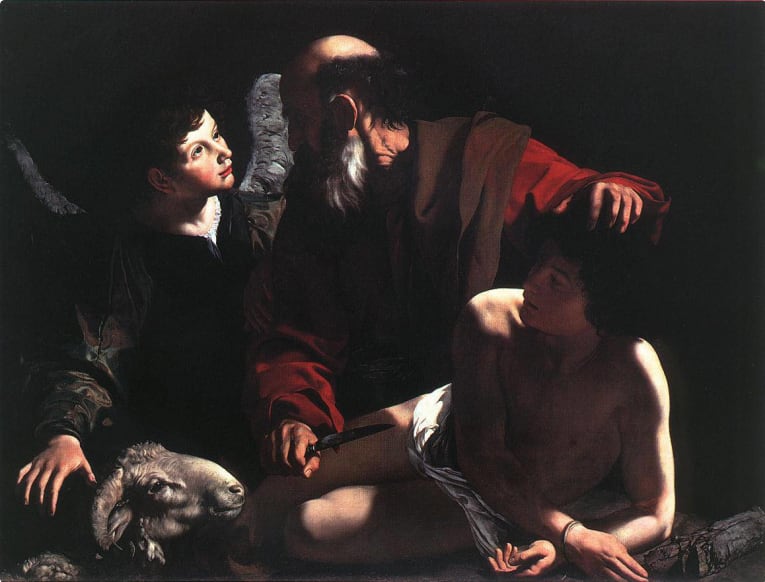
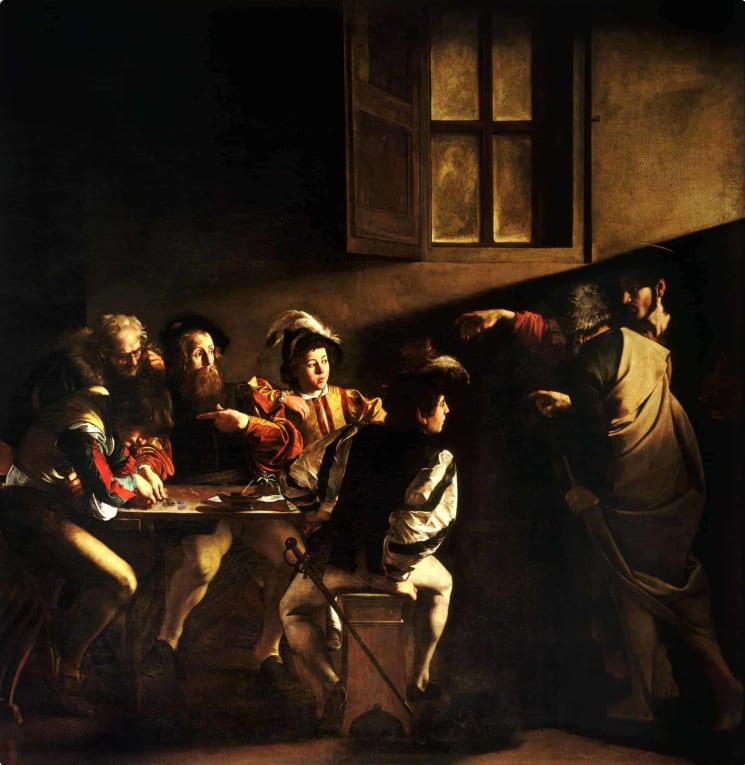
His style influenced Holland’s Rembrandt (see related article), and his staging of his subjects and his innovative use of light and shadow (chiaroscuro) have influenced filmmakers such as Martin Scorsese.
Caravaggio’s realistic style and modern sensibilities is evident in his Nativity. Art historian Danielle Carrabino, speaking to Alastair Sooke in 2013, describes this.
“Christ seems like a weary newborn, almost cast on the hay. His mother appears dishevelled, exhausted from the birth. This isn’t only the scene of the birth of the saviour, but a scene of a mother who has just given birth to any child.”
Caravaggio on the run
The combustible Caravaggio had an incredible temper, not helped at all by his insistence to (illegally) bear a sword. He would be arrested several times, his success nearly overshadowed by his bar brawls. Incidents included abusing the police and throwing a plate of scalding artichokes at a waiter.
In 1606, Caravaggio got into an argument with another man over a gambling debt (or a woman). The argument escalated into a sword fight, which resulted in Caravaggio stabbing his rival and killing him. The Italian painter fled Rome, and he was convicted in absentia of murder.
He fled to Naples and Malta (he became a Knight of Malta but was expelled from the order after getting into yet another argument), before staying for a year in Sicily. It was in Sicily where he painted his late masterpieces, including the Nativity.
In 1610, Caravaggio’s friends were busy campaigning the Pope for the painter’s pardon, but before Caravaggio could return to Rome, he succumbed to an illness in Tuscany at the age of 38. (Click here to read more about the Italian painter’s life.)

Another Painting Lost and Found
Meanwhile, a painting depicting the Biblical story of Judith beheading the Assyrian general Holofornes (a second version of the well-known painting), believed to be by Caravaggio, was found by accident in an attic and will be auctioned in June 2019. It will be a no-reserve auction – which means the painting will be sold regardless of price. In 2016, two years after it was found, investigators and art historians made a compelling case that it was indeed painted by the Italian master, but the Louvre decided not to buy it. Now the painting will go to the highest bidder in Toulouse.
The highest bidder may be another museum. Of the 68 known paintings by Caravaggio, only four are in private hands, a testament to how rare these paintings are–and how frustrating it is to not know the fate of one.
On June 25, 2019, however, the painting was quietly bought by a buyer to the tune of US$170 million. The anonymous buyer was later revealed to be billionaire collector J. Tomilson Hill.
Travelling to Caravaggio’s Italy
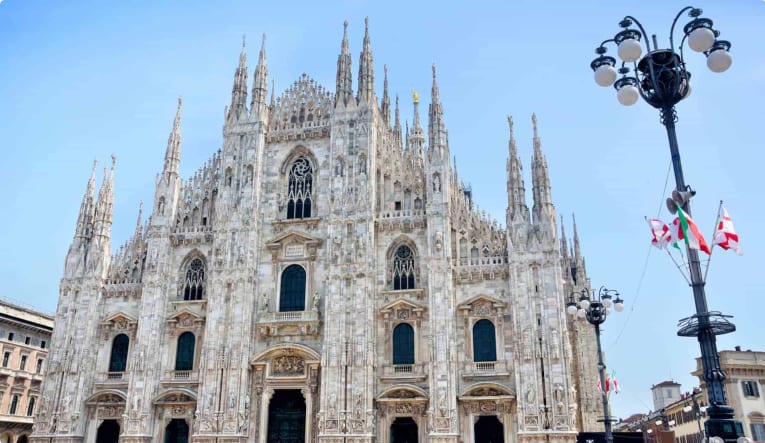
If you want to learn more about Caravaggio and his other masterpieces, we’ve published an article focusing on 10 of his paintings.
If you want to see these paintings in person, Odyssey Traveller has an escorted small group tour tracing Caravaggio’s journey, viewing the artistic works he left behind and exploring the tumultuous life he led. This tour follows him from his birthplace in Milan, to Rome, Malta, Sicily, and on to Naples. This tour was especially designed for the active mature and senior traveller and stays in eight different cities over 20 days. Click through to sign up.
This tour can be paired with the Florence tour, which stays in the city for 22 days. This gives the small group an immersive history lesson about the Medici family and the Renaissance period. Click through to sign up.
Experience la dolce vita with Odyssey Traveller on our tours of Italy. Once the centre of the Roman Empire and the birthplace of the Renaissance, Italy has much to offer travellers. See the ruins of ancient Rome. Visit the world’s smallest country, Vatican City, the city-state surrounded by Rome and admire the opulent Sistine Chapel and some of the world’s finest Renaissance art. Marvel at the majesty of the Gothic Doge’s Palace in the centre of roadless Venice, the city of more than 100 small islands. Admire the dramatic shorelines of Lake Como, nestled in the foothills of the Italian Alps. Head to Florence and the Chianti region to glory in the wonder that is Tuscan wine. Set against the rugged Apennine Mountains, Tuscany’s beautiful scenery is just as charming as the food and wine on offer. In southern Italy, experience the breathtaking landscapes of the dazzling Amalfi coast, where pastel villages tumble into azure blue seas. Off the ‘toe’ of Italy’s ‘boot’, you will find Sicily, the largest Mediterranean island. Home to the formidable Mount Etna and Agrigento’s Concordia temple, Sicily is a treasure trove of natural and architectural wonders. Discover one of Italy’s hidden gems off the coast of Sicily in the Aeolian Islands, a volcanic archipelago with sparklingly clear seas and picture-perfect landscapes.
With so much exploring on the cards, you are bound to work up an appetite. Luckily, there is no shortage of mouth-watering food when it comes to Italian cuisine. Beyond the (amazing) staples of pizza and pasta, Italy’s food culture is fiercely local, with each region having its own mouth-watering specialty for you to try as you tour the beautiful Italian landscape.
Updated on December 9, 2019.
Related Tours
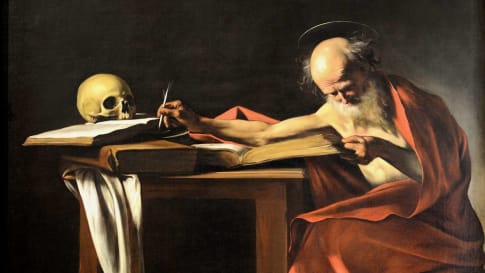
20 days
May, OctCaravaggio’s Journey | Small Group Tour in Italy
Visiting Italy, Malta
On this small group tour of Italy and Malta for mature and senior couples and solo travellers we trace the life of Caravaggio, exploring the artistic works he left behind and the tumultuous life he led. We follow him from his birthplace in Milan to Rome, Malta, Sicily and Naples. In each place he lived Caravaggio left behind a rich legacy of art for us to admire.
From A$15,125 AUD
View Tour
22 days
Mar, Sep, MayFlorence: Living in a Renaissance City
Visiting Italy
A small group tour with like minded people, couples or solo travellers, that is based in Florence. An authentic experience of living in this Renaissance city The daily itineraries draw on local guides to share their knowledge on this unique European tour. Trips to Vinci, Sienna and San Gimignano are included.
From A$14,375 AUD
View Tour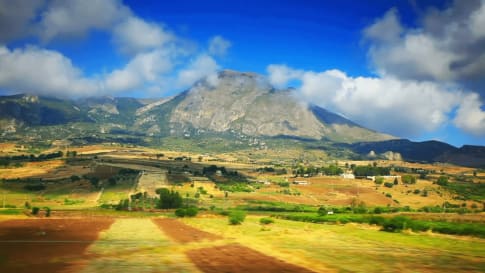
25 days
Apr, Sep, OctMediterranean Islands Small Group Tour | Malta, Sicily, Sardinia and Corsica
Visiting Corsica, Italy
For centuries Malta, Sicily, Sardinia and Corsica held the key to the Mediterranean. Unlike other European tour companies, Odyssey provides a tour leader and local guides to share detailed itineraries about the destinations on these small group journeys. This escorted tour of western Mediterranean explores the geography, history, culture and peoples of these 4 islands. Small group tour for mature couples and solo travellers. A reasonable single supplement is charged.
From A$19,750 AUD
View Tour
12 days
Apr, Oct, SepMalta & Sicily - Mediterranean Islands small group tour
Visiting Italy, Malta
For centuries Malta & Sicily, held the key to the Mediterranean. Unlike other European tour companies, Odyssey provides a tour leader and local guides to share detailed itineraries about the destinations on these small group journeys. For mature couples and solo travellers. A reasonable single supplement is charged.
From A$10,150 AUD
View Tour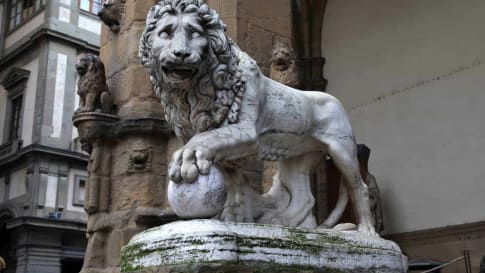
21 days
Apr, Aug, MayRenaissance Italy Tour: Story of Five Families
Visiting Italy
Explore Renaissance Italy on this small group tour though an examination of five significant city states. Florence, Urbino, Ferrara, Mantua and Milan were all dominated by families determined to increase the status of their city through art and architecture. Spend time coming to know the men and women who helped create the cities, as well as the magnificent legacy they left behind.
From A$14,295 AUD
View Tour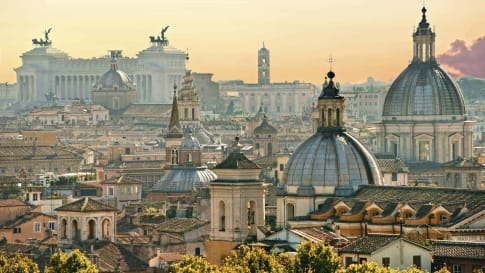
15 days
DecDiscover Rome | Cultural and History Small Group Tour for Seniors
Visiting Italy
Rome is arguably the most fascinating city in Italy, the capital city, once the centre of a vast, ancient empire and still today a cultural focus within Europe. Explore the city in-depth as part of a small group program spending 15 days exploring, just Rome and Roman History.
From A$9,235 AUD
View Tour